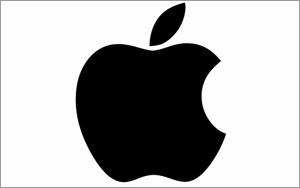 Logo means word, and the first one wasn't for Bass Ale. It was a lot more arcane than that; ask a theologian to explain John 1:1. Whether they are “The Word,” or an image,
brand logos are visual representations of the company's persona. Brand consultancy Siegel + Gale has, at the behest of clients, taken a look at which logos punch above and below their weight, and what
design and familiarity does to meaning.
Logo means word, and the first one wasn't for Bass Ale. It was a lot more arcane than that; ask a theologian to explain John 1:1. Whether they are “The Word,” or an image,
brand logos are visual representations of the company's persona. Brand consultancy Siegel + Gale has, at the behest of clients, taken a look at which logos punch above and below their weight, and what
design and familiarity does to meaning.
The “Logos Now” study looks at how consumers perceive logo styles and attributes, and also reveals which logos are most
memorable, what makes them so, and what kinds of personality traits logo styles evoke.
The firm asked 3,000 U.S. and U.K. residents to take a look at 100 of the world’s
largest brands, categorized into nine types of treatments. Each respondent got a randomized list of 30 logos across all nine design categories. Generally, the firm found that illustrative custom
wordmarks (Instagram's logo, for example), evoke “fun,” “friendly,” “cool,” “trendy,” and “stylish.” Organic logos, like BP's mandala-like
graphic, evoke “warm,” “caring,” “fun,” “fresh,” “friendly,” and “innovative.” The other seven are geometric (Chase); sans
serif (FedEx); Serif (Prada); holding shape (Uniqlo); initials (IBM); font based wordmark (Jeep) and stylized effects (Xbox.)
advertisement
advertisement
Respondents named the brands they found to be the
most memorable. Of the brands they selected as memorable, respondents stated which elements made them appealing and memorable. They were also asked to pick the top three attributes recognized, and
those they did not recognize.
Brian Rafferty, global director of research insights at Siegel + Gale, tells Marketing Daily that a critical aspect of the research was on
logos that respondents did not recognize. “People who don't recognize a logo are experiencing it and rating it purely on things like design, and what it seems to signify.”
It isn’t surprising that the most memorable logos are the usual suspects: Nike, Apple, Coca-Cola, and McDonald's. But what about brands that should be as memorable, given their near
parity to the four in terms of ubiquity, longevity and media spend. They aren’t: Google, Microsoft, PepsiCo, Amazon, Target and Adidas lagged far behind in memorability.
The study found that the logos that respondents remembered most strongly were of the illustrative custom wordmark and the organic logo types, such as Coca-Cola and Apple, respectively.
“We found that familiarity doesn't breed contempt, in this case. If you are familiar with them less likely to see them negatively.” He adds that when the firm asked which aspects made a
logo memorable, it was simplicity. “Think of the Nike swoosh.”
The most memorable logos were 13% more likely to get consumers' attention, 7% more likely to
encourage consumers to learn more about the brand and 6% more likely to create for the brand an aura of uniqueness. When people recognize a logo, they are likely to ascribe traits like trust, respect,
reliability, premium, power, innovation and friendly, in descending order of recognizability. Going the other way, as a logo is un-recognized by an increasing number of people, the descriptors begin
to get negative, and respondents begin using terms like “boring,” “pretentious,” and “tacky.”
Rafferty says that because of the importance of
memorability, there is great risk in change if it doesn’t come with context, either a change in corporate strategy, business or organization. “A logo change is a signal. You had better
have a good story about why. When people they see a new package or logo, without context, they think the change is not for the better. They think they are being sold something worse.”